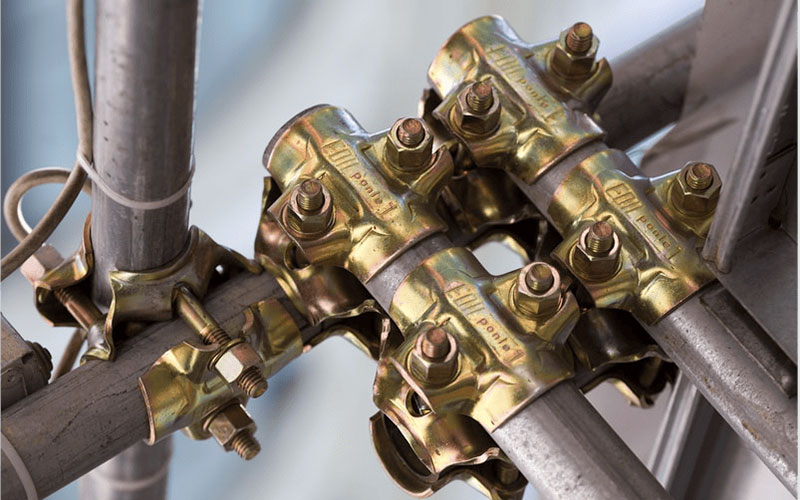A comprehensive guide to scaffolding connections and their use
In civil engineering, construction, industrial and refinery projects, scaffolding plays a vital role in providing safe access to heights and carrying out construction or repair operations. One of the main elements in the erection of these temporary structures is scaffolding connections, which are responsible for connecting, maintaining and strengthening the scaffolding components.
In this article, we will examine the types of scaffolding connections, their characteristics, applications and safety tips related to them.
What are scaffolding connections?
Scaffolding connections or “scaffolding clamps” are metal parts designed to connect scaffolding tubes to each other. These clamps play a key role in forming a stable, reliable and safe scaffolding structure. The quality, type and correct installation of these connections will have a direct impact on the safety of users and the strength of the scaffolding structure.
Types of scaffolding connections
1. Double-screw clamp (upright)
For vertical connection of scaffolding pipes
Widely used in perpendicular intersections
High mechanical resistance
2. Swivel clamp (rotary)
Connecting two pipes at a desired angle
Suitable for structures with irregular shapes
Flexible in design and execution
3. Core clamp (Japanese clamp or pipe connector)
For longitudinal connection of two pipes in line
To increase the length of the scaffolding
Easy and strong installation
4. Single-screw clamp (iron clamp or tulip)
Suitable for light and temporary connection
Light weight and high installation speed
Economical option for small projects
5. Hammer clamp (percussion)
Quick installation with just a hammer blow
No need for screwing tools
Suitable for high speed installation and dismantling
Standard scaffolding connection features
Made of galvanized steel or durable cast iron
Resistant Against rust and environmental conditions
Has quality certificates (EN74, BS1139, etc.)
Designed to withstand axial and lateral loads
Can be used repeatedly in various projects
Applications of scaffolding joints
High-rise construction projects
Industrial and petrochemical workshops
Urban and infrastructure projects
Execution of building facades and facade construction
Repair of historical buildings and special structures
Safety tips for using scaffolding joints
Check the physical and structural health of each joint before installation
Use a special scaffolding wrench to tighten the screws
Follow installation and loading standards
Do not use damaged or rusty joints
Train executives for correct and safe installation
Conclusion
Scaffolding joints play a fundamental role in the structure of scaffolding. Choosing the right type of connection for the project conditions, using standard equipment, and installing it properly will ensure the safety of personnel and the success of the project. A proper understanding of these types of connections helps engineers and technicians create a strong, stable, and safe structure.

